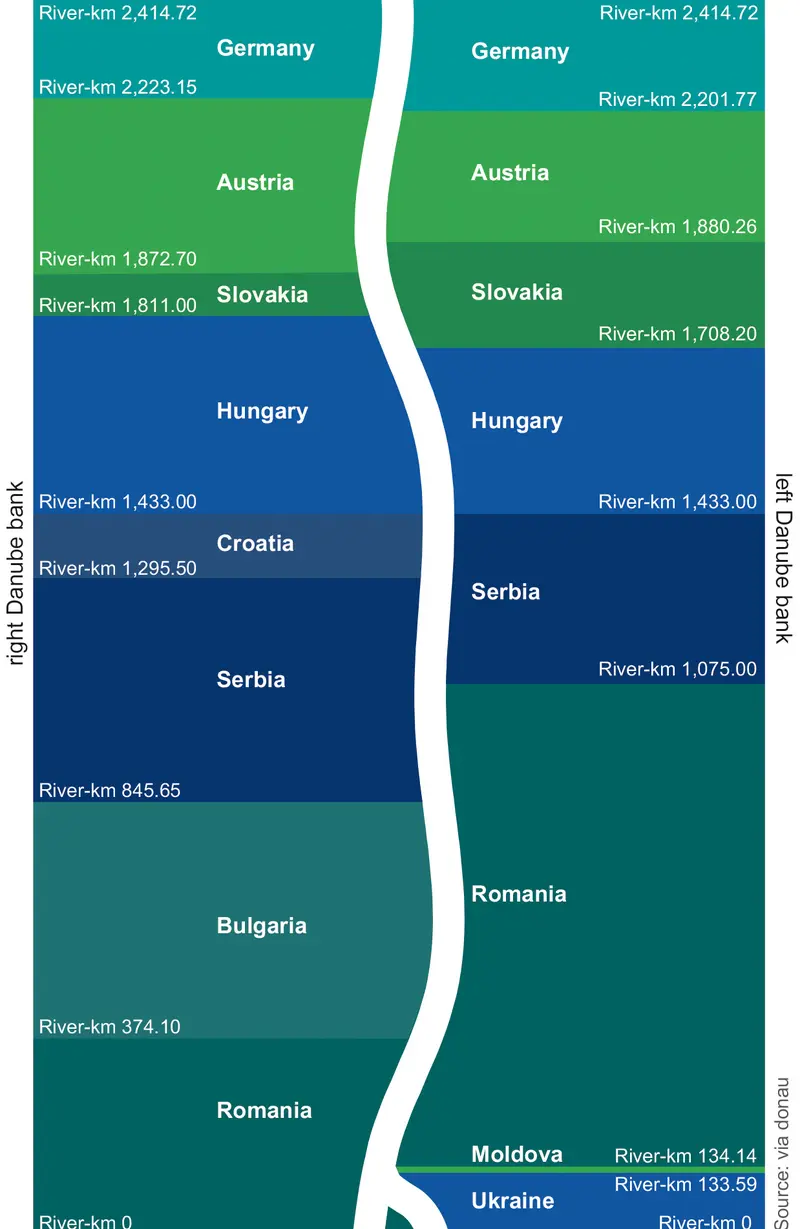With a total length of 2,845 kilometres, after the Volga river, the Danube is the second longest in Europe. Almost 2,415 kilometres of the river (from Kelheim to Sulina) are navigable. The Danube flows through ten riparian countries on its way from the Black Forest (Germany) to its delta in the Black Sea (Romania and Ukraine) and is the most international river in the world. Since the opening of the Main-Danube Canal in 1992, the Rhine-Main-Danube waterway has connected a total of 14 European. The total length between the mouth of the Danube at the Black Sea and the point where the Rhine flows into the North Sea is 3,504 kilometres. The connection between the Rhine-Main region and the Danube is made via the 171 kilometre long Rhine-Main-Danube Canal.
No shipping charges are levied for traffic on the international waterways of the Danube and Rhine. Since Januray, 1 2019 no fee incur for traffic on the Main-Danube Canal (Germany) however, the Danube-Black Sea Canal (Romania) is a national waterway that is not subject to the provisions of the Belgrade Convention of 1948 and therefore fees have to be paid. This Convention established the principle of free navigation on the Danube for all merchant ships flying the flags of the Danube riparian countries.
| Length |
|
|---|---|
| Catchment area | 801,463 km² (66% of the inflow comes from tributaries on the right bank and 34% from the left-bank) |
| Northernmost point | Regensburg (Germany); River km 2,382 |
| Southernmost point | Svishtov (BG); River km 554 |
| Kilometre mileage | From the mouth of the central Delta arm on the Black Sea; 0-km mark at Sulina |

